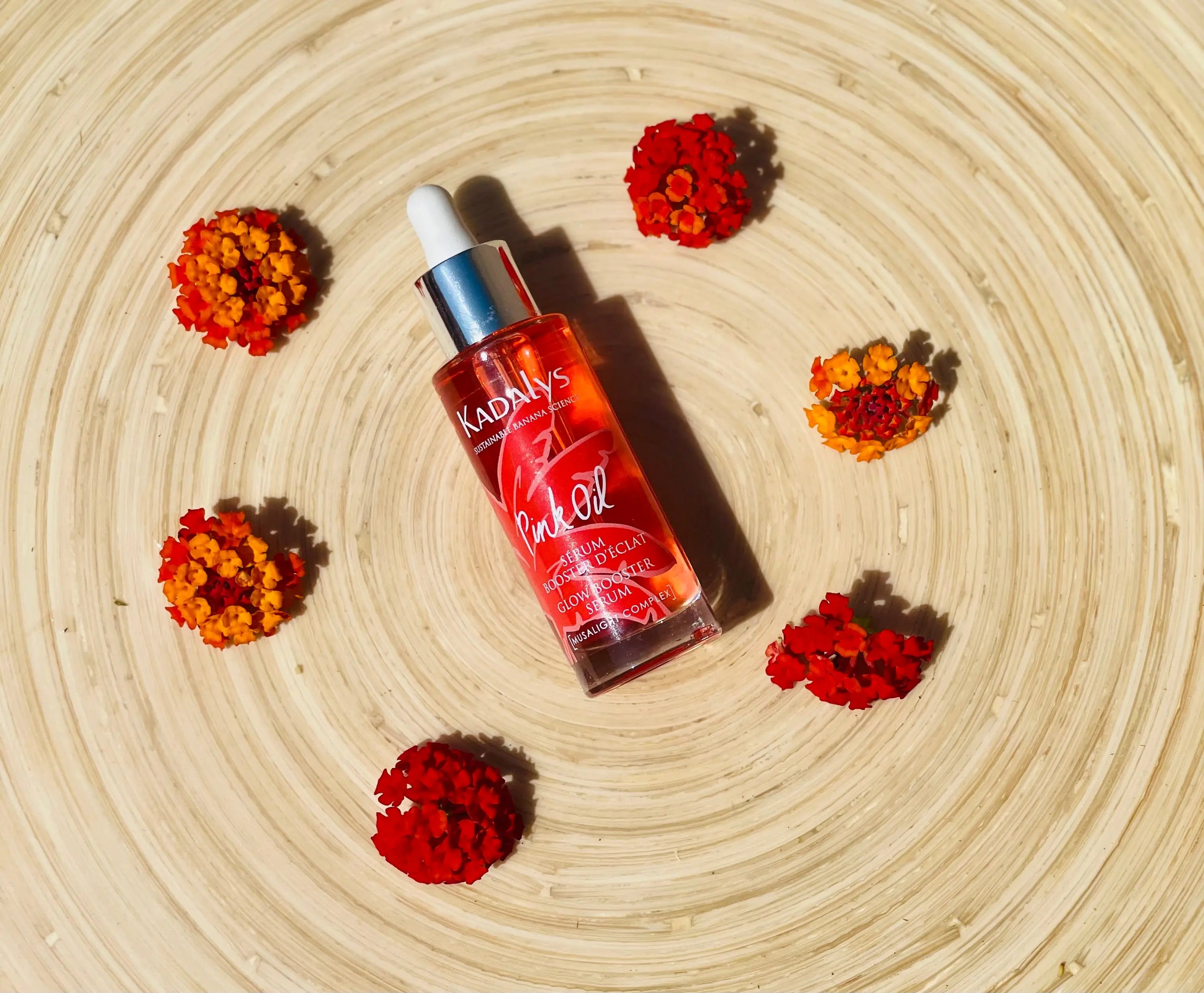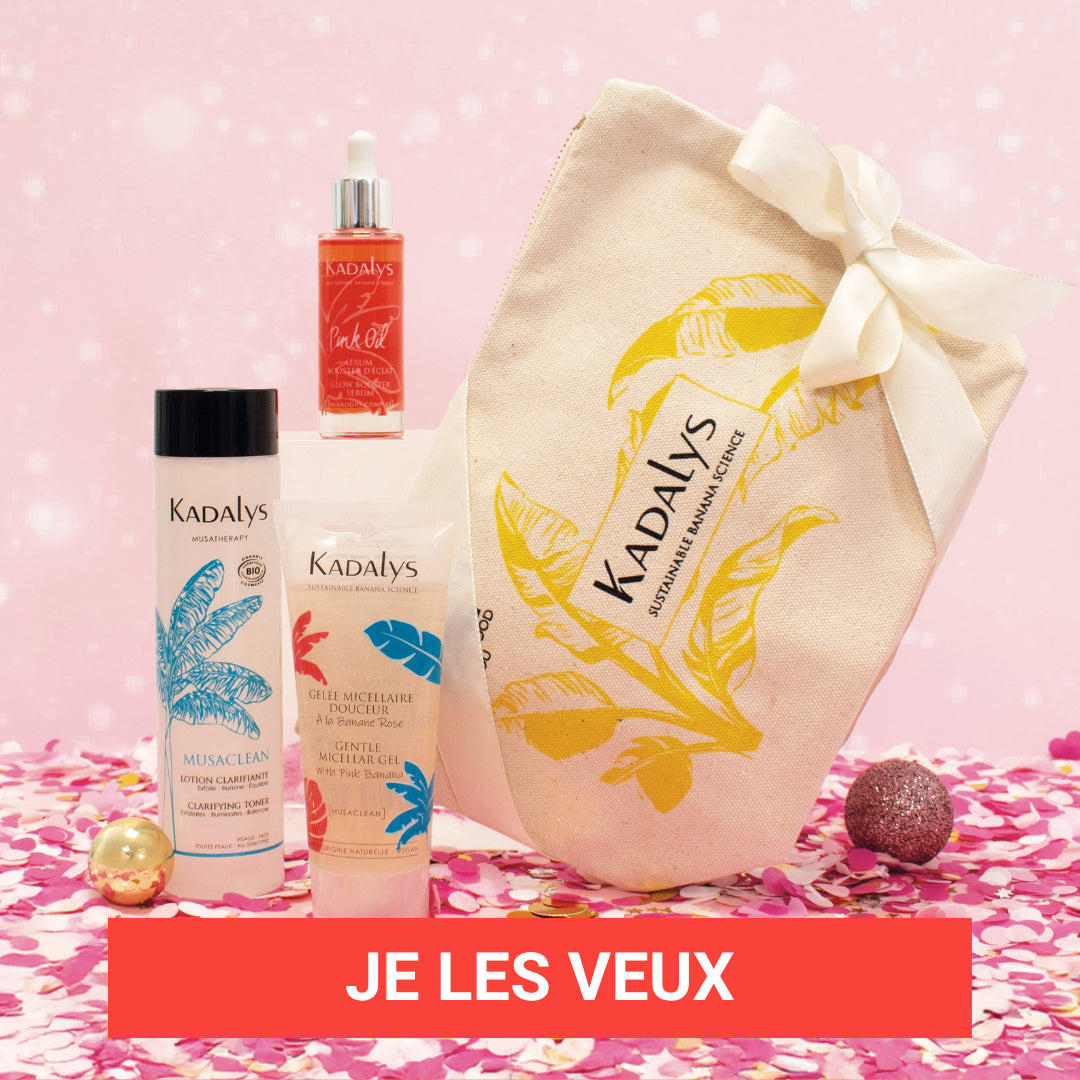
Aqueous serum VS oily serum
Less is more: this is the big trend in 2023 in terms of cosmetics, which consists of doing less but better by focusing on essential products that are above all adapted to one's skin type! The serum plays an active role in this minimalist and light beauty routine. For mature skin in search of elasticity, for young skin in need of a detox, or for dry skin in need of hydration, the fav one of our rituals is the ideal solution to naturally sublimate your skin. But you need to know how to find the perfect serum for your skin's problems... Just like your day cream, it should not be chosen at random. Before sifting through its formulation, let's take a look at its texture. Are you looking for an aqueous or oily serum? Kadalys answers once and for all this age-old question that beauty addicts are always asking...
SUMMARY
- What is a serum?
- What is an aqueous serum?
- What is an oil serum?
- How to choose between these two types of serum according to your skin problems?
- How to use a face serum?
What is a serum?
The serum is often (too often) neglected in favor of the day cream. It's hard to tell the difference between all the skincare products on the cosmetics market. However, the serum is indeed one of the essentials of a beauty routine, not to be confused with the moisturizer. This wonder care product is loaded with active ingredients such as essential oils, plant oils and hyaluronic acid, and has a specific texture and beneficial properties before applying a day cream. The one that we tend to neglect could well save your skin.
For mature skins, it has an anti-aging power by firming the skin thanks to a smoothing and tightening effect. A real natural rejuvenation cure without the need for a surgical procedure, it soothes, reduces redness and solves problems related to sensitive skin. For young skins, it will be able to make its small effect in punctual cure to look after the skin and bring to him what it needs: hydration, brightness, regulation of sebum...
What is an aqueous serum?
Imported from the Asian beauty recipes that saw the birth of the famous "Jelly skin" trend, or the art of working on an ultra plumped up skin, the aqueous serums have taken over our beauty routine for a good cause. On the web, we can't stop praising the merits of these little gems that have spread like wildfire. Mainly made of water or hydrophilic derivatives, these must-have beauty products ensure that the skin is supplied with as much water as possible without retaining it on the surface.
Thanks to their inimitable gel-like texture, these serums are by definition ultra-hydrating. They are as effective in soothing delicate and sensitive skin as they are in restoring the skin's balance. They are the perfect solution to prepare your skin before applying your daily skin care products. Aqueous serums have already seduced beauty addicts who are inspired by the layering trend, a fast-growing method that consists of applying several products in succession, based on the premise that a single product can never provide several complete answers.
What is an oily serum?
Oily serums are well known both for their formulation and their texture. They are pure concentrates of active ingredients and essential minerals, capable of sublimating your skin thanks to the power and not the least of vegetable oils. Devoid of water, they favor rich ingredients such as vegetable oils and butters, antioxidants and fat-soluble active ingredients. An innovative formulation that borders on perfection since it does without emulsifiers, preservatives and pH adjusters. The result? Its composition rich in active ingredients that act in synergy favors the penetration of the care into the subcutaneous cells of your epidermis to guarantee its nutrition and reinforce its hydrolipidic barrier. But it is indeed thanks to its high concentration in oils that the oily serum is the best. This is why we have selected the best ingredients to formulate our Radiance Booster Serum. Zoom on these "pore" oils with exceptional active properties:
Sunflower oil, my healthy glow ally: renamed the sun flower, it is a nickname that suits it perfectly. And for good reason, this natural ingredient is ideal for restoring radiance and the healthy glow that we sorely need at this time of year, especially for dull skin. As a bonus, this miraculous, multi-capacity skin care oil helps to soften, smooth and preserve the skin's moisture. Jojoba oil, the ultimate moisturizer: among the most prized vegetable oils, this oil never ceases to amaze us and to enhance our skin's assets. A real concentrate of fatty acids, this versatile oil is in turn nourishing, moisturizing, rebalancing, softening, soothing and regenerating... Just that! Suitable for all skin types, jojoba oil nourishes dry skin while fighting against dehydration, rebalances the production of sebum in oily skin to eliminate imperfections and slows down the skin aging process in mature skin. The champion of vegetable oils, it is indeed her! Rapeseed oil, mother of all foods: particularly appreciated in cooking, rapeseed oil not only delights our taste buds and stomachs. Composed of more than 60% monounsaturated fatty acids, it is unstoppable when it comes to nourishing the skin in depth. For a long time confined to seasoning oil, it can now be used in all kinds of dishes to the delight of skin lacking in moisture. Castor oil, my youthful secret: if the prowess of castor oil on your hair is no longer to be proven, its powers on the skin are just as amazing! This natural essence is a formidable anti-aging asset. It stimulates the production of collagen to fill in wrinkles and fine lines but not only. It also treats pigmentation spots. An all-purpose oil, it also helps purify the skin and moisturize it deeply!How to choose between these two types of serum according to your skin problems?
The secret to flawless skin lies above all in the choice of products that will make up your ritual. There's no need to break the bank to pamper your skin! All you have to do is make a good diagnosis of your skin before you start looking for the perfect serum.
Although serums were originally designed exclusively for mature skin for their anti-aging properties, the trend has evolved. They can also be used to make up for the deficiencies of fragile skin and to care for young skin thanks to their prodigious concentration of active ingredients that intensely protect the skin in addition to a good moisturizer. So which serum should you choose according to your skin type?
The vegetable oils that make up oily serums are an excellent alternative for dry skin in cruel lack of hydration. Let's remember that these nuggets, which are very popular in natural cosmetics, help to reinforce the skin's hydrolipidic film to retain the level of hydration, just as they are unstoppable in ensuring skin balance. A godsend for people suffering from skin dryness. For mature skin, oil serums are beneficial to nourish the epidermis and give it back the elasticity and radiance it needs.
Among the misconceptions about oily serums, the idea that they are not recommended for combination to oily skin is a heresy. We explain ourselves! On the contrary, they are particularly recommended for acne-prone skin, as long as they contain essential oils capable of purifying the epidermis while regulating the excess sebum responsible for imperfections. Known for their anti-inflammatory and healing properties, it is without a doubt the ideal natural solution to detoxify the skin without stripping it, an excellent alternative to chemical products that harm oily skin with acneic tendencies. However, be sure to choose an oily serum composed of non-comedogenic oils that could have the opposite effect and give rise to skin breakouts.
Did you know that oily skin tends to accumulate skin problems? In fact, as if that weren't enough, this type of skin generally lacks moisture. This is where water-based serums come into play to nourish and moisturize the epidermis in depth without making it greasy. With their lighter, more airy texture, they are highly recommended for combination, oily and dehydrated skin. To your pipettes!
How to use a face serum?
Should you apply the serum before or after your day cream? This is the eternal dilemma that divides beauty lovers. If this facial care is essential, it should not be used at any time and should not be rushed. The first basic rule to remember is that a serum is not a substitute for a day cream and vice versa. Serum and day cream are to cosmetics what Stone & Charden are to French song: inseparable. A powerful duo to give your skin a radiant look and provide everything it needs during the day.
On clean skin that has been cleansed with a cleansing foam or lotion, the aqueous serum prepares the skin before applying the day cream. Combined with the latter, it increases the effects of the moisturizer tenfold and provides lasting protection for the skin. When it comes to application, there is still one mistake that the most seasoned beauty addicts make in their routine. We're talking about the almost mechanical reflex of putting the pipette of serum directly on the skin. This is a bad habit that should be avoided for good, as it can lead to the proliferation of bacteria on the tip. The foolproof method? Place a few drops of your care product in the palm of your hand, warm the substance with circular movements to revive the power of the active ingredients before applying the serum from the center of the face outwards. The ultimate is to perform a massage with a jade roller to tone, smooth and firm the skin thanks to the freshness it gives off.
On the other hand, we recommend applying your oil serum after your day cream. The water contained in your moisturizer helps to promote the absorption of your care. For those who are in a hurry, it is possible to incorporate a few drops of the serum directly into your cream jar. The verdict?








